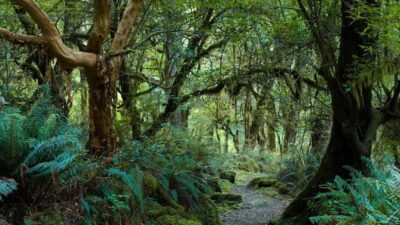Flore Bois Gaillard was a St Lucian runaway slave who led a band of free slaves called ‘Armée Française Dans Les Bois (French Army in the Woods).
The life of Flore Bois Gaillard
Flore Bois Gaillard was an enslaved biracial woman owned by a man known as Master Bellac. For several years, she worked on his plantation and later in his home as a maidservant. There are no records of her early childhood, but it is safe to assume that being biracial, she was born on the islands to an enslaved black mother who was impregnated by a white man.
Tired of being sexually abused and treated harshly by Master Bellac, Flore managed to escape the plantation in 1793. She took refuge in the woods, where she met the Maroons. There, she joined the French Army of the Woods, made up of Maroons, escaped Black slaves, French revolutionaries and English deserters. The army planned a rebellion to rid the country of the British and declare St Lucia a free country.
Flore quickly rose in the ranks of the army to become one of the military leaders. Following a tip that the British were on their way to attack her army, Flore planned a counterstrike. Flore and her army went to Soufriere to attack slave owners and take revenge for the atrocities of 1791, in what we now know as the Battle of Rabot.
The Brigands War
The Brigands War in St Lucia began in 1791 after the French National Assembly sent a delegation to St Lucia to promote the Revolution. By August of that year, the slaves left the estates. Called the Negre Marron, these men and women raided plantations, stealing items they needed to survive. They also encouraged other slaves to join them.
The unrest was too much for St Lucian Governor Jean-Joseph Sourbader de Gimat to handle, so he fled the island to Martinique. The National Convention abolished slavery on 4 February 1794. The British, who wanted to regain control over St Lucia, were in total disagreement with the French abolitionist initiative. They called the runaways brigands. They feared that freeing the slaves would ruin the economy. They believed ideas of freedom should not be encouraged. In an attempt to re-institute slavery, the British declared war on the French in Saint Lucia.
The British invaded the island in April and took it over. The former slaves armed themselves and joined with the free blacks and the French to resist the British invasion and defend the freedom that the French had promised them. Their intention was to march on the British to request their freedom from the slave owners, but the march was immediately reported to British officials, who ordered the leaders to be captured.
The leaders and several others who were involved in the march were captured and tortured to death, and their heads were cut off and placed on spikes and displayed around town to serve as a warning. For several years, this terrible event stayed in the minds of the blacks who planned and hoped for vengeance.
The Battle of Rabot
The British from Castries landed over a thousand troops at Vieux Fort and marched them overland to Soufriere. They attacked on 22 April at Fond Doux and Rabot. A crucial battle took place on that day, which proved the Brigands’ military tactics and prowess so that they could hold on to the town of Soufriere. However, destruction was widespread. They attacked planters and torched the estates. They destroyed seven of the eleven towns and villages. Castries and Soufriere, and Gros Islet were spared.
Flore’s army was successful in killing several British slave owners, burning down plantations and freeing several slaves who later joined the army. It is said that Flore killed her former master and burned down his plantation. The surviving British fled to Castries.
The Battle of Rabot drew the attention of the British army and the French. With the support of Jean-Baptiste Victor Hugues, Flore and her army joined the Brigands War, which saw the total defeat of the British on 19 June 1795. The British and the Royalist planters fled the island, and the St Lucians enjoyed a year of freedom from slavery.
There is no record of Flore Bois Gailard after the war, so it is not known whether she escaped or died in battle. Like Nanny of the Maroons and Marie Sainte Dédée Bazile, Flore Bois Gaillard is remembered here.
Sources: Flore Gaillard, Saint Lucia’s “Lumina-Sophie”
Face 2 Face Africa





